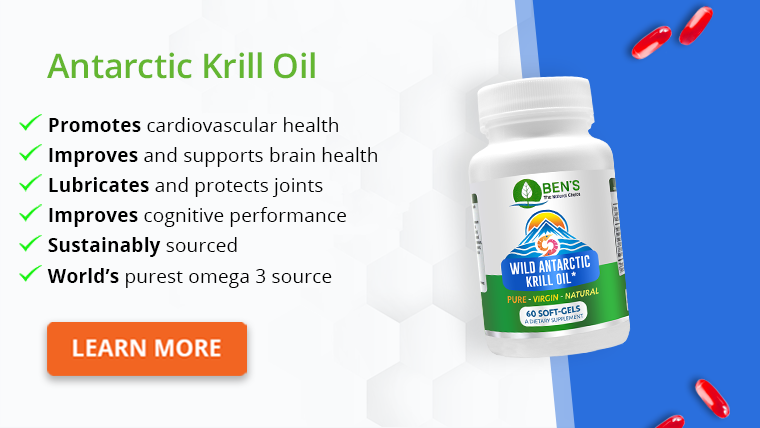As the global living standards have risen, hygiene standards have improved, and people are less likely to catch infections.
However, lifestyle changes are now causing a new kind of pandemic.
More than 70% of people are now likely to die due to non-infectious diseases like stroke, diabetes, cancer, and more.
WHO data shows that ischaemic heart disease and stroke are the top 2 leading causes of death globally.
However, what is worrisome is that data also shows that the incidence of stroke has been increasing.
Both ischaemic heart disease and stroke are cardiovascular disorders. Therefore, it means that preventing one would also help prevent the other.
Moreover, wrong lifestyle choices have much to do with the increased incidence of cardiovascular disorders like stroke.
All this means that stroke is among the highly preventable health issues.
Lifestyle interventions, nutritional therapy, supplements, and certain medications can help prevent most stroke occurrences.
What is a stroke?
A stroke is also called a “brain attack” and occurs due to the disruption of blood supply to the various parts of the brain. Once the blood supply is disrupted, part of the brain is deprived of oxygen, resulting in the death of the brain cells in that part of the brain.
Although blockage of arteries is the most common cause of stroke, resulting in almost 80% of all strokes, in some cases, it may occur due to the rupture of certain blood vessels and bleeding.
There are three main reasons for the blockage of arteries: the formation of the clot in one of the arteries (thrombosis), or a clot is formed elsewhere and travels to the brain, thus causing its blockage or embolism. And the third reason is the gradual narrowing of arteries in the brain (stenosis).

Causes & risk factors
Some people are at a higher risk than others. However, having one of the risk factors does not essentially mean that a person would have a stroke. Risk factors merely mean that one should try harder to prevent stroke.
On the other hand, the absence of the risk factors does not mean there is no stroke risk. Thus, all adults should take measures to reduce their lifetime stroke risk.
When we talk about risk factors for stroke, they are modifiable and non-modifiable.
Non-modifiable risk factors and causes are
Age
Although stroke may occur at any age, there is a global tendency of stroke in young adults. Nonetheless, most stroke events occur in older adults, especially in those above the age of 55.
Gender
Men are at a greater risk of stroke in young and middle age, though this difference is negligible at an older age.
Race
Certain ethnic groups are at a greater risk of stroke due to genetics, lifestyle choices, and more. Thus, stroke is much more common in people of African origins or South Asians when compared to whites.
Family history
Stroke is more common in some families, thus indicating its risk to genetics. In addition, some families are predisposed to high blood pressure, diabetes, and other health issues. Additionally, lifestyle choices could be another cause.
Here it is vital to understand that although you cannot modify these risk factors, you can still significantly lower stroke risk through lifestyle interventions.
Hence, considering the non-modifiable risk factors is also necessary, as they merely mean a greater need for stroke prophylaxis and to take steps to reduce the risk of stroke.
Modifiable risk factors for a stroke
High blood pressure
More than one-third of adults are living with hypertension. However, less than one-fourth of those living with hypertension adequately control it.
Thus, no surprise that hypertension is among the leading preventable causes of stroke. Healthier life choices and medications can help control blood pressure.
Cigarette smoking
Fortunately, fewer people are smoking now than 50 years ago. Still, the number of people smoking is significant.
It appears that nicotine is especially bad for blood vessels. It is among the leading causes of vascular disease and thus contributes to stroke.
Heart disease
As already mentioned, stroke is a cardiovascular ailment, so those living with poor heart health are at a considerable risk of a stroke.
In addition, the risk of stroke is particularly high when living with specific conditions like atrial fibrillation due to a higher risk of clot formation.
Diabetes
More than 10% of adults are living with diabetes. Diabetes is the leading cause of vasculopathy or vascular ailments. In addition, those living with diabetes are at a much higher risk of developing stroke.
High cholesterol
High cholesterol or LDL levels may cause a build-up of arterial plaques and cause stiffening of arteries, causing atherosclerosis. Atherosclerosis is the leading cause of heart attack and stroke.
Obesity
Obesity is on the rise globally. It considerably increases the risk of diabetes, hypertension, and cardiovascular ailments.
9 ways to prevent a stroke
Understanding how to reduce stroke risk is vital to prolonging life. There are many things you can do to minimize stroke risk.
Choose a healthy diet
Dietary measures are vital. Thus, increase dietary fiber intake, healthy fats, and essential fatty acids like omega-3s. You should limit the intake of fast-absorbing carbs.
Diet for stroke patients should include foods good for blood vessels like green vegetables and fruits. Fresh fruits and veggies are the best foods to prevent a stroke. You should pay particular attention to a high intake of micronutrients: vitamins and minerals.

Maintain healthy body weight
Obesity is among the leading causes of stroke. Thus, make healthier lifestyle choices, do stroke prevention exercises, and reduce body weight.
Here it is vital to understand that along with weight reduction, one should pay particular attention to flattening the tummy and keeping an eye on body mass index (BMI). Studies show that so-called central obesity can considerably increase stroke risk.
Exercise regularly
There are no specific stroke prevention exercises. However, moderate intensity aerobic exercise for 45 minutes daily may be quite helpful.
Exercises to prevent a stroke may also include lifting weights. Exercises help by improving cardiovascular and respiratory health. It also helps boost blood supply to the brain.
Quit smoking
Choose healthy lifestyle choices and quit smoking to prevent stroke. Remember that nicotine is among the leading causes of vascular conditions like stroke.
Here it is vital to understand that even vaping nicotine will harm. Smoking cessation can help significantly lower the risk. However, avoid using nicotine pills to quit smoking.
Control blood pressure
If you live with high blood pressure, ensure it is well controlled. It is especially vital for those with a transient ischemic attack or issues like atrial fibrillation.

Cholesterol management
As high cholesterol is associated with a greater risk of atherosclerosis, maintaining a healthy cholesterol level is essential for stroke prevention.
Control diabetes
Diabetes leads to vasculopathy and increases the risk of stroke multiple times. In addition, high blood sugar causes much vascular damage. Thus, when living with diabetes, ensure that blood sugar levels remain within normal limits.

Take medications
Medications for stroke prevention like low-dose aspirin and antihypertensive drugs can help significantly. One may also consider supplements for stroke prevention.
Consult your doctor
Although taking various lifestyle measures is good, it is equally important to work closely with your health care team. Doctors can help in multiple ways.
For example, they can make recommendations regarding lifestyle changes and diet, prescribe medications, recommend supplements, and more. They can also screen for stroke risk.
Conclusion
Stroke is among the top 5 leading causes of death globally. Additionally, it causes significant disability. Therefore, learning more about stroke prevention diet, lifestyle changes, exercises, and more is essential.
It is important to understand that stroke is a highly preventable condition. Moreover, lifestyle changes can help significantly reduce stroke risk.
Here it is also interesting to note that most non-infectious diseases are interrelated. It means that measures taken to reduce the risk of one condition can help reduce the risk of all other conditions.
Just take an example of a stroke. Measures taken to reduce stroke risk can help regularize body weight and blood pressure, reduce the risk of heart attack, and help minimize diabetes risk. Not only that, it can help improve kidney and liver health.
As cardiovascular events are becoming common in young adults, it is vital to start efforts early. Thus, high-risk individuals like those with a family history of stroke or cardiovascular ailments must consider stroke prevention measures after age 30. Unfortunately, after the 40s, it may be challenging to reverse the changes in the cardiovascular system.
Explore More







